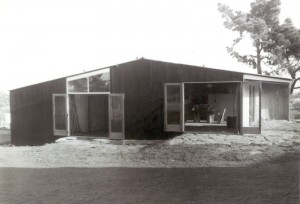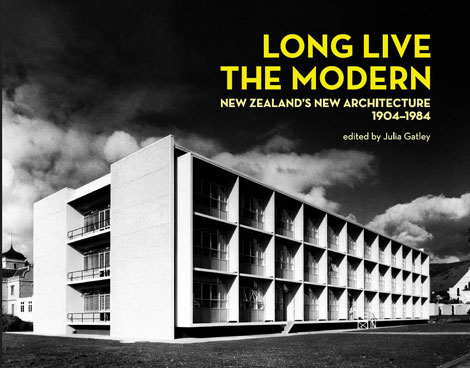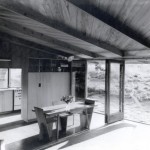Group Architects – Towards a New Zealand Architecture
“We New Zealanders live in a chaos of unplanned speculative building under an unthinking, self-seeking system of land sub-division. Our suburbias spread their tentacles along all the city traffic routes; our children cross streets to get to school; our wives buy in inadequate and too-distant shops lining the main roadways; our hospitals are over-crowded; our transport system is overloaded; our homes are ill-planned, graceless and monotonous in their petty variety.
We know there is another way of living…”
Sound familiar? This could have been written in 2010, but was actually written in 1948 in New Zealand as part of the Manifesto of “the Group”, the almost mythical assembly of New Zealand modernists responsible for a mid-century wave of simple, thoughtful, mainly Auckland houses. Arising from a post-war interest in clean, open, modernist principles, the Group was a collection of students and the occasional staff member at Auckland University, pretty much concurrent with our very own Architectural Centre. Indeed, some of the founders were members of both the Group and the Centre – the sharp-witted octogenarian William S Toomath was around at the start of both these movements, and is still going strong today, as are some other members of the Group such as Alan Wild.
The Group (both Architects and Builders) is long overdue for extensive public scrutiny, and so the book is warmly awaited. It seems almost beyond belief that no one has written a book on them before – instead, just a scant few articles exist in back copies of NZ Architect. How can we have neglected our greatest modernist heroes like this? If only there was already more awareness of the Group stuck in the public’s consciousness, then we might have a residential heritage to be proud of like the picture below – instead, our modern New Zealand is still just as “ill-planned, graceless and monotonous,” with suburban detritous littering the lands.
It is interesting to read of the origins of the Group, especially in light of the simultaneous existence of the Architectural Centre. The Group famously published only one edition of its magazine Planning (a mint copy would be as collectable as a copy of the first Superman comic), but they did finish their Manifesto – while at the Centre we took another 60 years to publish our manifesto. I’m still keen to see volume two of Planning – the unfinished project – perhaps a draft sits in a drawer somewhere. The Group started construction of the “First” House in Auckland, just after the Arch Centre had started the Demonstration House right here in Wellington. As usual, the Aucklanders slagged off the efforts of Wellington and said they could do better. While the Arch Centre stopped at just one built house (a largely student project), the Group diverged into different groupings – Group Architects, Group Builders, etc and continued building for a number of years. As always in the north / south argument, Wellington continued to talk and write, while Auckland spent money on property. But the Group has not lasted as long as the Arch Centre has – we’re still going (some would say, only just, but we’re not going away any day soon), while for the Group, the doors closed forever in 1968 when Bill Wilson died.
Gatley’s previous (2008) book, Long Live the Modern, was notable in particular for certain things: a vast area of coverage, an unusually large number of authors (over 40), along with crisp design and stark B+W photography. It also sold solidly, being well into multiple print runs, and happily appears to have made it almost right round the country as a home grown, modernist coffee table picture book. That’s a pretty impressive achievement about a subject, which on the face of it, has only limited numbers of interested followers. Is there really such a thing as Group groupies? Will this architectural Group history do as well?
This volume varies somewhat from the previous book: only 9 writers made the cut this time, but there is a lot of excellent research in here, putting some long held beliefs to bed (such as that they only built a few houses, and only in Auckland), and opening up whole new chapters for study.
Thankfully, in most cases, the architecture remains unscathed today, with just extensive growth in foliage and assorted personal lifestyle detritus, although it is disturbing to see that some of the Group’s work has been demolished as recently as 2007. The book appears just in time to raise awareness for this disappearing and unappreciated part of our architectural heritage – but this is not just a picture book for the coffee table. There is also a less rigid graphic feel to the pages, with a change to full colour for most of the images, with new photography by Simon Devitt and Paul McCredie to offset the dated, B+W heritage views from dusty old archives.
Books about stroppy students / architects are always going to be fun to read. Christine McCarthy writes on the machinations surrounding Professor Light’s appointment to the Auckland School of Architecture at the time of the Group’s genesis. As a recently full-time academic myself, it is interesting to read that the students have always been keen to revolt – but in 1948 they revolted hard, and very nearly succeeded to overthrow the school. That’s after very nearly throwing the Head of School in the duck pond – don’t get any ideas!
Gatley has divided the book into three parts, each with several authors. In Part One, an attempt is made to define just who really was in the Group: the breadth being much wider than you may think. What is surprising to me at least, and I suspect to the majority of the New Zealand architectural community as well, is just how prolific the Group was. It got me thinking how much the Arch Centre missed out on by not continuing to build in Wellington, but then again, our seminal members such as Toomath, Beard, Alington and Wilson (all still healthy and hearty) established their own practices and continued a strong modernist tradition in Wellington that still exists today (a book on these staunch totaras is due out soon from A4 Publishing).
Part Two of the Book of the Group (get used to Capitals from me – although in reality the group always spelt their name in lower case) is the largest part, showing the full documented extent of their work for the very first time. We’re probably all familiar with the work of the Group concerning two or three very tidy small houses with broad gabled eaves, but what is intriguing here is just how wide and extensive their range of work truly was, with an impressively bewildering range of housing types as well as several carefully documented instances of public and commercial buildings. You, like me, will find it fascinating that the iconic broad gable of the First house is not necessarily repeated that often – house plan possibilities included barrel vaulted roofs, triangular plans, and modernist Miesian concrete corporate boxes. You’ll just have to buy the book to find out more. The NZIA are having a book launch in Wellington on 20th October, so you can grab a copy then.
Part Three is a collection of related essays by highly esteemed academics from Auckland and Wellington – far more esteemed than me – and the topics for discussion are broad. Brenda Vale writes on the use of Prefabrication, Andrew Barrie writes regarding the influence of the Japanese aesthetic, and there’s plenty more on the Group from Bill McKay and Julia Gatley.

While the essays themselves individually are all an interesting read, the third section seems to me to sit a little uneasily with the remainder of the book, the subjects not quite tying together in a cohesive flow. Nonetheless, this book will be a great addition to every architect’s private library – with well-reasoned and well-written words on architecture and buildings that display a certain unhurried, uncluttered calmness, and quiet self-confidence.
The work of the Group is still highly relevant to New Zealand architects today. This book is not just a catalog of history of an idealist group of individuals who once had a strongly socialist driving force (affordable homes for every man and every woman). It is a keen reminder of our social obligation (often lacking nowadays) in the architectural profession, and as such this review ends with words taken once more from the Group’s Manifesto:
“Fundamental to this point of view is the belief that architecture cannot be imposed on anybody. It can only arise out of the daily life of Everyman, and without Everyman there can be no architecture. Building nice houses for nice people is not architecture.”
Review by Guy Marriage





Leave a Reply